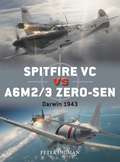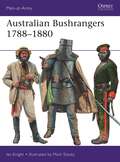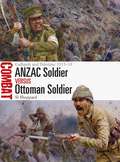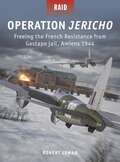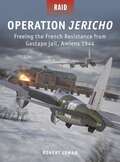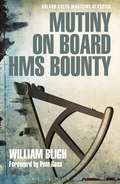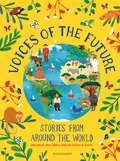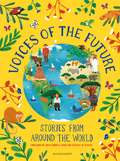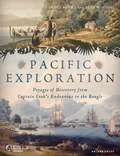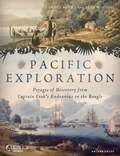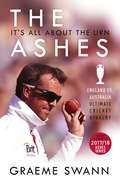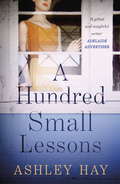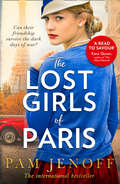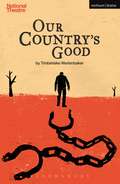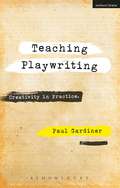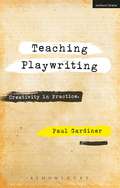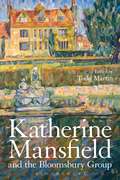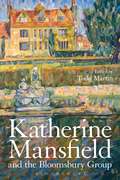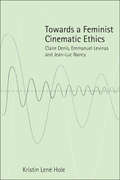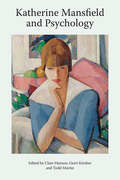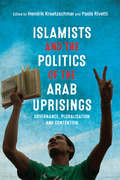- Table View
- List View
Spitfire VC vs A6M2/3 Zero-sen: Darwin 1943 (Duel)
by Peter IngmanJust weeks after Pearl Harbor, Darwin was mauled by a massive Japanese attack. Without a single fighter to defend Australian soil, the Australian government made a special appeal to Britain for Spitfires. A year later the Spitfire VC-equipped No 1 Fighter Wing, RAAF, faced the battle-hardened 202nd Kokutai of the IJNAF, equipped with A6M2 Zero-sens, over Darwin. This was a gruelling campaign between evenly matched foes, fought in isolation from the main South Pacific battlegrounds. Pilots on either side had significant combat experience, including a number of Battle of Britain veterans. The Spitfire had superior flight characteristics but was hampered by short range and material defects in the tropical conditions, while the Japanese employed better tactics and combat doctrine inflicting serious losses on the over-confident Commonwealth forces. Fully illustrated with detailed full-colour artwork, this is the gripping story of two iconic aircraft facing off against each other above Australia.
Australian Bushrangers 1788–1880 (Men-at-Arms)
by Ian KnightThe first 'bushrangers' or frontier outlaws were escaped or time-expired convicts, who took to the wilderness – 'the bush' – in New South Wales and on the island of Tasmania. Initially, the only Crown forces available were redcoats from the small, scattered garrisons, but by 1825 the problem of outlawry led to the formation of the first Mounted Police from these soldiers. The gold strikes of the 1860s attracted a new group of men who preferred to get rich by the gun rather than the shovel. The roads, and later railways, that linked the mines with the cities offered many tempting targets and were preyed upon by the bushrangers. This 1860s generation boasted many famous outlaws who passed into legend for their boldness. The last outbreak came in Victoria in 1880, when the notorious Kelly Gang staged several hold-ups and deliberately ambushed the pursuing police. Their last stand at Glenrowan has become a legendary episode in Australian history. Fully illustrated with some rare period photographs, this is the fascinating story of Australia's most infamous outlaws and the men tasked with tracking them down.
Australian Bushrangers 1788–1880 (Men-at-Arms)
by Ian KnightThe first 'bushrangers' or frontier outlaws were escaped or time-expired convicts, who took to the wilderness – 'the bush' – in New South Wales and on the island of Tasmania. Initially, the only Crown forces available were redcoats from the small, scattered garrisons, but by 1825 the problem of outlawry led to the formation of the first Mounted Police from these soldiers. The gold strikes of the 1860s attracted a new group of men who preferred to get rich by the gun rather than the shovel. The roads, and later railways, that linked the mines with the cities offered many tempting targets and were preyed upon by the bushrangers. This 1860s generation boasted many famous outlaws who passed into legend for their boldness. The last outbreak came in Victoria in 1880, when the notorious Kelly Gang staged several hold-ups and deliberately ambushed the pursuing police. Their last stand at Glenrowan has become a legendary episode in Australian history. Fully illustrated with some rare period photographs, this is the fascinating story of Australia's most infamous outlaws and the men tasked with tracking them down.
ANZAC Soldier vs Ottoman Soldier: Gallipoli and Palestine 1915–18 (Combat)
by Si SheppardIn 1915–18, ANZAC and Ottoman soldiers clashed on numerous battlefields, from Gallipoli to Jerusalem. This illustrated study investigates the two sides' fighting men.The Gallipoli campaign of 1915–16 pitched the Australian and New Zealand volunteers known as the ANZACs into a series of desperate battles with the Ottoman soldiers defending their homeland. In August 1915, the bitter struggle for the high ground known as Chunuk Bair saw the peak change hands as the Allies sought to overcome the stalemate that set in following the landings in April. The ANZACs also played a key part in the battle of Lone Pine, intended to divert Ottoman attention away from the bid to seize Chunuk Bair. The Gallipoli campaign ended in Allied evacuation in the opening days of 1916. Thereafter, many ANZAC units remained in the Middle East and played a decisive role in the Allies' hard-fought advance through Palestine that finally forced the Turks to the peace table. The fateful battle of Beersheba in October 1917 pitted Australian mounted infantry against Ottoman foot soldiers as the Allies moved on Jerusalem. In this book, noted military historian Si Sheppard examines the fighting men on both sides who fought at Lone Pine, Chunuk Bair and Beersheba. The authoritative text is supported by specially commissioned artwork and mapping plus carefully chosen archive photographs.
ANZAC Soldier vs Ottoman Soldier: Gallipoli and Palestine 1915–18 (Combat)
by Si SheppardIn 1915–18, ANZAC and Ottoman soldiers clashed on numerous battlefields, from Gallipoli to Jerusalem. This illustrated study investigates the two sides' fighting men.The Gallipoli campaign of 1915–16 pitched the Australian and New Zealand volunteers known as the ANZACs into a series of desperate battles with the Ottoman soldiers defending their homeland. In August 1915, the bitter struggle for the high ground known as Chunuk Bair saw the peak change hands as the Allies sought to overcome the stalemate that set in following the landings in April. The ANZACs also played a key part in the battle of Lone Pine, intended to divert Ottoman attention away from the bid to seize Chunuk Bair. The Gallipoli campaign ended in Allied evacuation in the opening days of 1916. Thereafter, many ANZAC units remained in the Middle East and played a decisive role in the Allies' hard-fought advance through Palestine that finally forced the Turks to the peace table. The fateful battle of Beersheba in October 1917 pitted Australian mounted infantry against Ottoman foot soldiers as the Allies moved on Jerusalem. In this book, noted military historian Si Sheppard examines the fighting men on both sides who fought at Lone Pine, Chunuk Bair and Beersheba. The authoritative text is supported by specially commissioned artwork and mapping plus carefully chosen archive photographs.
Operation Jericho: Freeing the French Resistance from Gestapo jail, Amiens 1944 (Raid)
by Robert LymanThis is the story of Operation Jericho, the spectacular prison break staged by an elite group of British, Australian and New Zealand bomber pilots, who flew a daring low-level mission to blow holes in the walls of Amiens jail and free French Resistance prisoners under the sentence of death during World War II.With D-Day looming, early 1944 was a time of massive intelligence activity across northern France, and many résistants were being captured and imprisoned by the Germans. Among the jails full of French agents was Amiens, where hundreds awaited likely execution for their activities.To repay their debt of honour, MI6 requested an air raid with a seemingly impossible brief: to simultaneously blow holes in the prison walls, free as many men and women as possible while minimizing casualties, and kill German guards in their quarters. The crews would have to fly their bomb-run at an altitude of just 20ft. Despite the huge difficulties, the RAF decided that the low-level specialists of No. 140 Wing had a chance of success. With the aid of first-hand accounts, explanatory 3D diagrams and dramatic original artwork, the eminent historian Robert Lyman explains how one of the most difficult and spectacular air raids of World War II was pulled off, and debunks some of the myths over why the raid was ordered in the first place.
Operation Jericho: Freeing the French Resistance from Gestapo jail, Amiens 1944 (Raid)
by Robert LymanThis is the story of Operation Jericho, the spectacular prison break staged by an elite group of British, Australian and New Zealand bomber pilots, who flew a daring low-level mission to blow holes in the walls of Amiens jail and free French Resistance prisoners under the sentence of death during World War II.With D-Day looming, early 1944 was a time of massive intelligence activity across northern France, and many résistants were being captured and imprisoned by the Germans. Among the jails full of French agents was Amiens, where hundreds awaited likely execution for their activities.To repay their debt of honour, MI6 requested an air raid with a seemingly impossible brief: to simultaneously blow holes in the prison walls, free as many men and women as possible while minimizing casualties, and kill German guards in their quarters. The crews would have to fly their bomb-run at an altitude of just 20ft. Despite the huge difficulties, the RAF decided that the low-level specialists of No. 140 Wing had a chance of success. With the aid of first-hand accounts, explanatory 3D diagrams and dramatic original artwork, the eminent historian Robert Lyman explains how one of the most difficult and spectacular air raids of World War II was pulled off, and debunks some of the myths over why the raid was ordered in the first place.
Mutiny On Board HMS Bounty (Great Illustrated Classics #Vol. 19)
by William BlighOn 28th April 1789 a small and unremarkable merchant vessel became one of the most famous ships in maritime history. HMS Bounty was under the command of 34-year-old Lieutenant William Bligh, an inexperienced commander who lacked the respect of a crew attracted to the promise of an easy life in a Tahitian paradise.Fletcher Christian led half the crew in mutiny against Bligh and after overpowering all resistance, they cast their deposed captain adrift along with those still loyal to him. Luckily for Bligh, his skills as a navigator were better than his skills as a captain and he managed to sail the 23ft boat 3,618 nautical miles to Timor in the Dutch East Indies with no chart or compass, and only a quadrant and a pocket watch for navigation. On returning to England he reported what had happened, and the Royal Navy hunted down and captured most of the mutineers.However, this is only half the story – William Bligh's version. The captured mutineers went on trial and their testimonies give a much less heroic portrait of their former captain, accusing him of unduly harsh treatment. Fletcher Christian's older brother Edward, a judge, oversaw a more balanced account of the mutiny. Of the mutineers who returned to England, only three were hanged; four were acquitted and three pardoned.This book gives the fullest version of the mutiny, allowing Bligh's account to sit alongside those of his detractors. The discrepancies are fascinating, and allow us to make up our own minds about this infamous mutiny.Also includes an exclusive Foreword by former World Sailor of the Year Pete Goss, who offers a unique perspective on the trials and tribulations of the Bounty's crew, whether castaway or mutineer.
Voices of the Future: Stories from Around the World
by Irina BokovaA wonderful anthology of eight stories addressing children's rights and sustainable development, written by child authors from all around the world and produced in conjunction with UNESCO's Voices of Future Generations initiative.UNESCO's Voices of Future Generations initiative works to empower children all around the world. The stories in this book are written by children aged between 8 and 12 from every corner of the globe: Canada, Mexico, Papua New Guinea, Samoa, South Africa, Taiwan, Uruguay and United Arab Emirates. With beautiful, full colour illustrations throughout by four talented illustrators, Jhonny Nunez, Giovana Medeiros, Marco Guadalupi and Mona Meslier Menaua, this book is the perfect way to engage children with the issues facing the planet and the lives of children in other countries.The children's stories are imaginative, empowering and inspiring. They focus on the UN Convention on the Rights of the Child and the Sustainable Development Goals and present likeable characters who go on problem-solving adventures to fix the problems faced in each region. The book features a foreword by Irina Bokova, Director General of UNESCO.'... and together, the children could build a better future.'Book band: Dark Blue
Voices of the Future: Stories from Around the World
by Irina BokovaA wonderful anthology of eight stories addressing children's rights and sustainable development, written by child authors from all around the world and produced in conjunction with UNESCO's Voices of Future Generations initiative.UNESCO's Voices of Future Generations initiative works to empower children all around the world. The stories in this book are written by children aged between 8 and 12 from every corner of the globe: Canada, Mexico, Papua New Guinea, Samoa, South Africa, Taiwan, Uruguay and United Arab Emirates. With beautiful, full colour illustrations throughout by four talented illustrators, Jhonny Nunez, Giovana Medeiros, Marco Guadalupi and Mona Meslier Menaua, this book is the perfect way to engage children with the issues facing the planet and the lives of children in other countries.The children's stories are imaginative, empowering and inspiring. They focus on the UN Convention on the Rights of the Child and the Sustainable Development Goals and present likeable characters who go on problem-solving adventures to fix the problems faced in each region. The book features a foreword by Irina Bokova, Director General of UNESCO.'... and together, the children could build a better future.'Book band: Dark Blue
Pacific Exploration: Voyages of Discovery from Captain Cook's Endeavour to the Beagle
by Nigel Rigby Pieter Van Merwe Glyn WilliamsCaptain Cook is generally acknowledged as the first great European scientific explorer. His voyage of exploration to the Pacific in HM bark Endeavour, commencing in 1768, lasted almost three years, recorded thousands of miles of uncharted lands and seas – including New Zealand, the east coast of Australia and many Pacific islands – and tested all Cook's skills as a navigator, seaman and leader. His voyages were among the first to take civilian scientists, notably Sir Joseph Banks, and they revealed to European eyes the mysterious and exotic lands, peoples, flora and fauna of the Pacific, never before seen. But while Cook understandably dominates the story of 18th-century Pacific exploration, the achievements of those who followed him on many voyages of science and exploration into the Pacific have been neglected and deprived of the greater attention they deserve. Correcting this imbalance, Pacific Exploration explores the European voyages that continued Cook's work not only of charting but also starting to exploit and control the Pacific. These voyages, by William Bligh, George Vancouver, Matthew Flinders, Malaspina, Lapérouse and Arthur Phillip, span a period that saw Britain becoming the world's leading maritime power, a situation well in place by the time that Charles Darwin's voyage in Fitzroy's Beagle laid the basis of even greater understanding of the development of life on earth. Recounting and illustrating these achievements and legacies using fascinating text and beautiful illustrations and artworks from the period, this book explores topics of scientific discovery, engagement with indigenous peoples, the use of shipboard artists and scientists, the growing professionalism of the hydrographic service, the vessels used and the colonial, commercial and imperial contexts of the voyages.
Pacific Exploration: Voyages of Discovery from Captain Cook's Endeavour to the Beagle
by Nigel Rigby Pieter Van Merwe Glyn WilliamsCaptain Cook is generally acknowledged as the first great European scientific explorer. His voyage of exploration to the Pacific in HM bark Endeavour, commencing in 1768, lasted almost three years, recorded thousands of miles of uncharted lands and seas – including New Zealand, the east coast of Australia and many Pacific islands – and tested all Cook's skills as a navigator, seaman and leader. His voyages were among the first to take civilian scientists, notably Sir Joseph Banks, and they revealed to European eyes the mysterious and exotic lands, peoples, flora and fauna of the Pacific, never before seen. But while Cook understandably dominates the story of 18th-century Pacific exploration, the achievements of those who followed him on many voyages of science and exploration into the Pacific have been neglected and deprived of the greater attention they deserve. Correcting this imbalance, Pacific Exploration explores the European voyages that continued Cook's work not only of charting but also starting to exploit and control the Pacific. These voyages, by William Bligh, George Vancouver, Matthew Flinders, Malaspina, Lapérouse and Arthur Phillip, span a period that saw Britain becoming the world's leading maritime power, a situation well in place by the time that Charles Darwin's voyage in Fitzroy's Beagle laid the basis of even greater understanding of the development of life on earth. Recounting and illustrating these achievements and legacies using fascinating text and beautiful illustrations and artworks from the period, this book explores topics of scientific discovery, engagement with indigenous peoples, the use of shipboard artists and scientists, the growing professionalism of the hydrographic service, the vessels used and the colonial, commercial and imperial contexts of the voyages.
The Ashes: England vs. Australia: ultimate cricket rivalry
by Graeme SwannShortlisted for Cricket Book of the Year at the British Sports Book AwardsGraeme Swann leads us on a compelling adventure through one of world sport's most engrossing rivalries. He knows as much as anybody about the heat of England v Australia battles, having played in three series wins and also the whitewash defeat of 2013-14 when its intensity ended his international career. However, it brought out some of his best displays in Test cricket. But he is just one of dozens of colourful characters to have added their chapters to this great tome. The mock obituary of English cricket in the Sporting Times of 1882 was the forerunner of summers and winters of heaven and hell, depending on which side of the divide you were situated. When it comes to on-field relations nothing quite compares to the over-my-dead-body feel of the Ashes.From Grace to Sir Don, the most graceful of them all. From the foulest play to the fairest - contrast the 1932-33 Bodyline series affair to the image of Andrew Flintoff hunched over a distraught Brett Lee in 2005. From Ray Illingworth's famous walk-off in the Seventies, when an England team-mate was assaulted by a spectator, to Steve Waugh's hugely emotional lap of honour when he retired a quarter of a century later. Swann's book will reveal the magic of a series that first gripped him in his front room in Northampton as an aspiring spin bowler in the mid-1980s.
A Hundred Small Lessons: A Novel
by Ashley Hay'I love Ashley Hay's writing . . . it's so poised and beautiful.' Guardian'A moving and lyrical story of marriage, motherhood and age. Highly recommend.' Cari Rosen, author of The Secret Diary of a New Mum (Aged 43 1/4)When Elsie Gormley leaves the Brisbane house in which she has lived for more than sixty years, Lucy Kiss and her family move in, eager to establish their new life. As they settle in, Lucy and her husband Ben struggle to navigate their transformation from adventurous lovers to new parents, taking comfort in memories of their vibrant past as they begin to unearth who their future selves might be. But the house has secrets of its own, and the rooms seem to share recollections of Elsie's life with Lucy.In her nearby nursing home, Elsie traces the span of her life-the moments she can't bear to let go and the places to which she dreams of returning. Her beloved former house is at the heart of her memories of marriage, motherhood, love, and death, and the boundary between present and past becomes increasingly porous for both her and Lucy.Over the course of one hot Brisbane summer, two families' stories intersect in sudden and unexpected ways. Through the richly intertwined narratives of two ordinary, extraordinary women, Ashley Hay uses her lyrical prose, poetic dialogue, and stunning imagery to weave an intricate, bighearted story of what it is to be human.
The Lost Girls Of Paris: The Bon Bon Girl / The Flower Seller / The Very White Of Love / Paris By The Book / The Lost Girls Of Paris (Hq Fiction Ebook Ser.)
by Pam Jenoff‘A gripping tale’ MY WEEKLY‘Thrilling’ WOMAN‘A truly gripping read of mystery, love and heroism’ FROST MAGAZINE The Lost Girls of Paris is an emotional story of friendship and betrayal during the second world war, inspired by true events – from the international bestseller Pam Jenoff.
Our Country's Good (Modern Plays)
by Timberlake WertenbakerObserved by a lone, mystified Aboriginal Australian, the first convict ship arrives in Botany Bay, 1788, crammed with England's outcasts. Colony discipline in this vast and alien land is brutal. Three proposed public hangings incite an argument: how best to keep the criminals in line, the noose or a more civilised form of entertainment?The ambitious Second Lieutenant Ralph Clark steps forward with a play. But as the mostly illiterate cast rehearses, and a sense of common purpose begins to take hold, the young officer's own transformation is as marked and poignant as that of his prisoners.A profoundly humane piece of theatre, steeped in suffering yet charged with hope, Timberlake Wertenbaker's Our Country's Good (based on a true story) celebrates the redemptive power of art.It premiered at the Royal Court Theatre, london, in 1988, winning the Laurence Olivier Play of the Year Award. This edition was published to coincide with a major revival production at the National Theatre, which opened on 19 August 2015.
Our Country's Good: Based On The Novel 'the Playmaker' By Thomas Keneally (Modern Plays)
by Timberlake WertenbakerObserved by a lone, mystified Aboriginal Australian, the first convict ship arrives in Botany Bay, 1788, crammed with England's outcasts. Colony discipline in this vast and alien land is brutal. Three proposed public hangings incite an argument: how best to keep the criminals in line, the noose or a more civilised form of entertainment?The ambitious Second Lieutenant Ralph Clark steps forward with a play. But as the mostly illiterate cast rehearses, and a sense of common purpose begins to take hold, the young officer's own transformation is as marked and poignant as that of his prisoners.A profoundly humane piece of theatre, steeped in suffering yet charged with hope, Timberlake Wertenbaker's Our Country's Good (based on a true story) celebrates the redemptive power of art.It premiered at the Royal Court Theatre, london, in 1988, winning the Laurence Olivier Play of the Year Award. This edition was published to coincide with a major revival production at the National Theatre, which opened on 19 August 2015.
Teaching Playwriting: Creativity in Practice
by Paul GardinerPlaywriting is a skill under-explored in the classroom, despite the strong evidence that it's an engaging and rewarding activity for young people. Teaching Playwriting addresses this gap and is an essential resource for teachers wanting to gain the skills and confidence necessary to introduce playwriting to their students. Based on rich research and clearly explained theoretical concepts, the book explores the lessons from creativity theory that will provide the teacher with the skills and knowledge necessary to empower students' writing and creativity. It also includes extensive practical activities and writing exercises to develop students' playwriting proficiency and creative capacity.Discussing key concepts in playwriting such as idea, dialogue, character, action and structure, the book enables teachers to respond to the unique learning needs of their students and help them tell their stories and reach their potential as young playwrights.
Teaching Playwriting: Creativity in Practice
by Paul GardinerPlaywriting is a skill under-explored in the classroom, despite the strong evidence that it's an engaging and rewarding activity for young people. Teaching Playwriting addresses this gap and is an essential resource for teachers wanting to gain the skills and confidence necessary to introduce playwriting to their students. Based on rich research and clearly explained theoretical concepts, the book explores the lessons from creativity theory that will provide the teacher with the skills and knowledge necessary to empower students' writing and creativity. It also includes extensive practical activities and writing exercises to develop students' playwriting proficiency and creative capacity.Discussing key concepts in playwriting such as idea, dialogue, character, action and structure, the book enables teachers to respond to the unique learning needs of their students and help them tell their stories and reach their potential as young playwrights.
Katherine Mansfield and the Bloomsbury Group
by Todd MartinThe New Zealand-born writer Katherine Mansfield associated intimately with many members of the Bloomsbury group, but her literary aesthetics placed her at a distance from the artistic works of the group. With chapters written by leading international scholars, Katherine Mansfield and the Bloomsbury Group explores this conflicted relationship. Bringing together biographical and critical studies, the book examines Mansfield's relationships – personal and literary – with such major Modernist figures as Virginia Woolf, T.S. Eliot, Aldous Huxley and Walter de la Mare as well as the ways in which her work engaged with and reacted against Bloomsbury. In this way the book reveals the true extent of Mansfield's wider influence on 20th-century modernist writing.
Katherine Mansfield and the Bloomsbury Group
by Todd MartinThe New Zealand-born writer Katherine Mansfield associated intimately with many members of the Bloomsbury group, but her literary aesthetics placed her at a distance from the artistic works of the group. With chapters written by leading international scholars, Katherine Mansfield and the Bloomsbury Group explores this conflicted relationship. Bringing together biographical and critical studies, the book examines Mansfield's relationships – personal and literary – with such major Modernist figures as Virginia Woolf, T.S. Eliot, Aldous Huxley and Walter de la Mare as well as the ways in which her work engaged with and reacted against Bloomsbury. In this way the book reveals the true extent of Mansfield's wider influence on 20th-century modernist writing.
The Urewera Notebook by Katherine Mansfield
by Katherine Mansfield Anna PlumridgeAn authoritative scholarly edition of Mansfield’s camping journal, offering new understandings of her colonial life Katherine Mansfield filled the first half of the Urewera Notebook during a 1907 camping tour of the central North Island, shortly before she left New Zealand forever. Her camping notes offer a rare insight into her attitude to her country of birth, not in retrospective fiction but as a nineteen year old still living in the colony. This publication is theirst scholarly edition of the Urewera Notebook, providing an original transcription, a collation of the alternative readings and textual criticism of prior editors, and new information about the politics, people and places Mansfield encountered on her journey. As a whole, this edition challenges the debate that has focused on Mansfield’s happiness or dissatisfaction throughout her last year in New Zealand to reveal a young writer closely observing aspects of a country hitherto beyond her experience and forming a complex critique of her colonial homeland. Key Features: A new, more accurate transcription of the notebook Textual notes provide significant variant readings from other extant editions of the notebook An introductory essay draws on important new developments in New Zealand literary criticism, advances in historiography of the period and legal history Includes a route map, revised itinerary and authoritative annotation for the text Includes 20 photographs, many previously unpublished, from Beauchamp family photograph albums at the Alexander Turnbull Library and Ebbett Papers at the Hawke’s Bay Museum
Katherine Mansfield and Psychology (Katherine Mansfield Studies)
by Gerri Kimber W. Todd MartinIn line with the recent surge of critical interest in early psychology, the contributors read Mansfield’s work alongside figures like William James and Henri Bergson, opening up new perspectives on affect in her work. While these essays trace strands within the intellectual milieu in which Mansfield came of age, others explore the intricate interplay between Mansfield’s fiction and Freudian theory, seeing her work as emblematic of the uncanny doubling of modernist literature and psychoanalysis.
Katherine Mansfield and Psychology (Katherine Mansfield Studies)
by Gerri Kimber W. Todd MartinIn line with the recent surge of critical interest in early psychology, the contributors read Mansfield’s work alongside figures like William James and Henri Bergson, opening up new perspectives on affect in her work. While these essays trace strands within the intellectual milieu in which Mansfield came of age, others explore the intricate interplay between Mansfield’s fiction and Freudian theory, seeing her work as emblematic of the uncanny doubling of modernist literature and psychoanalysis.
Islamists and the Politics of the Arab Uprisings: Governance, Pluralisation and Contention
by Hendrik Kraetzschmar Paola RivettiTraces Scotland's changing townscapes over a thousand years
